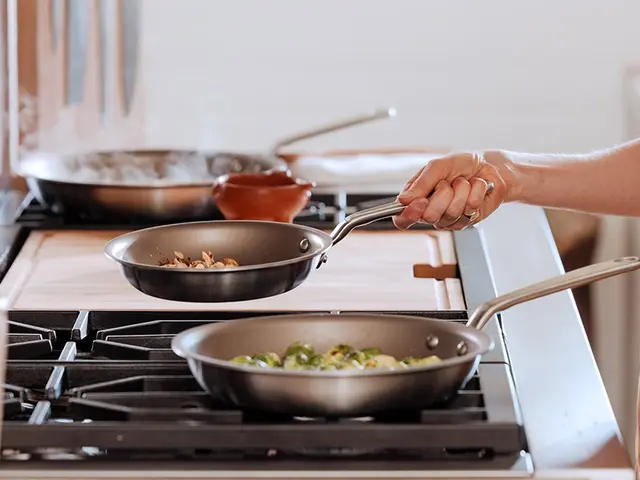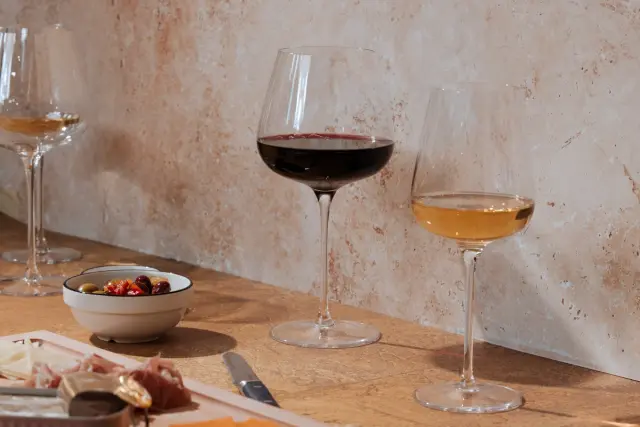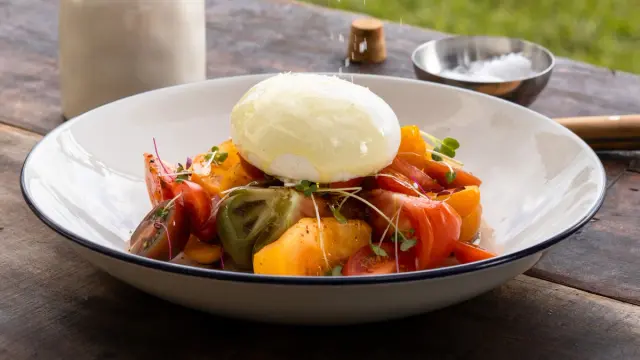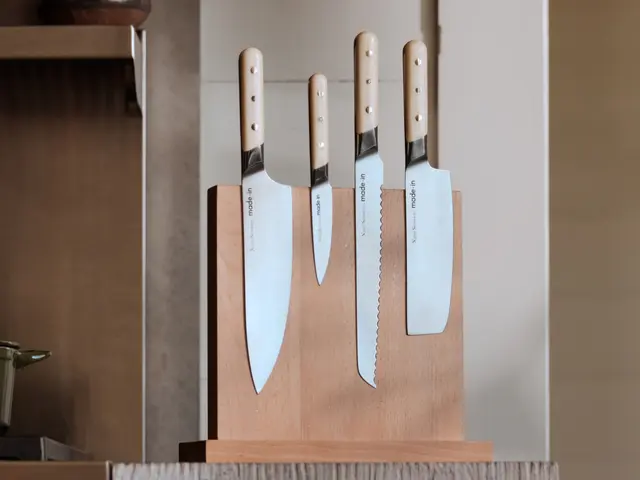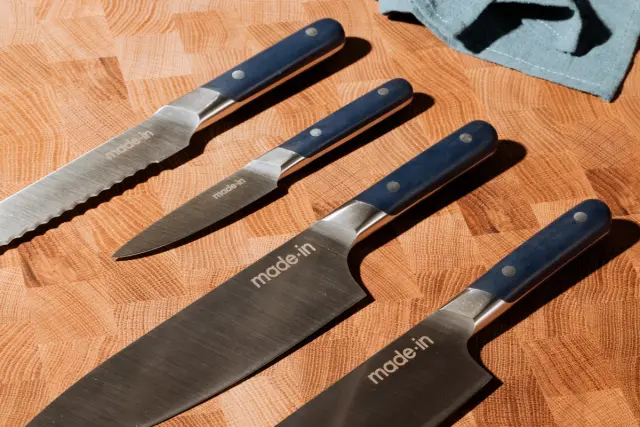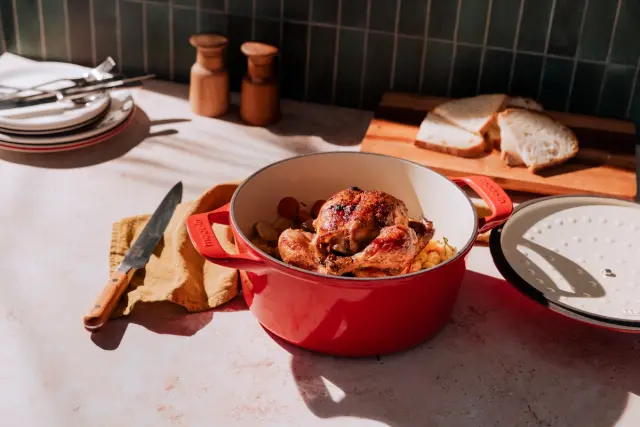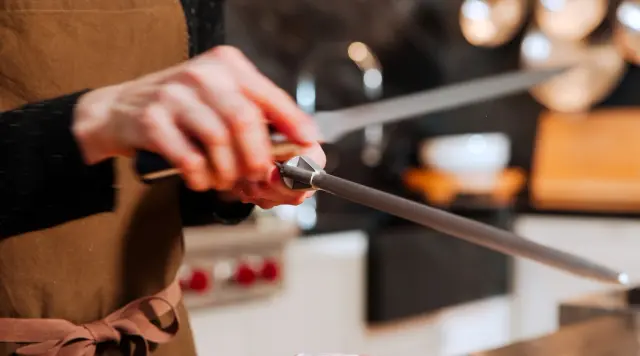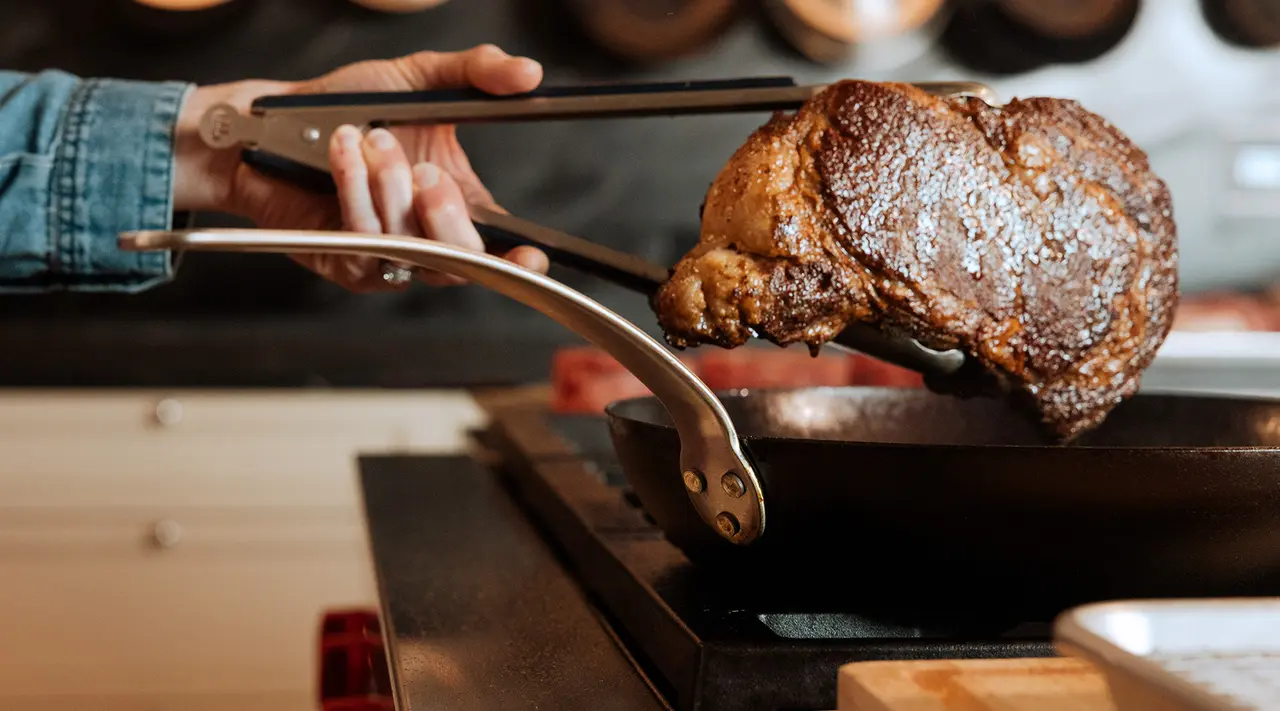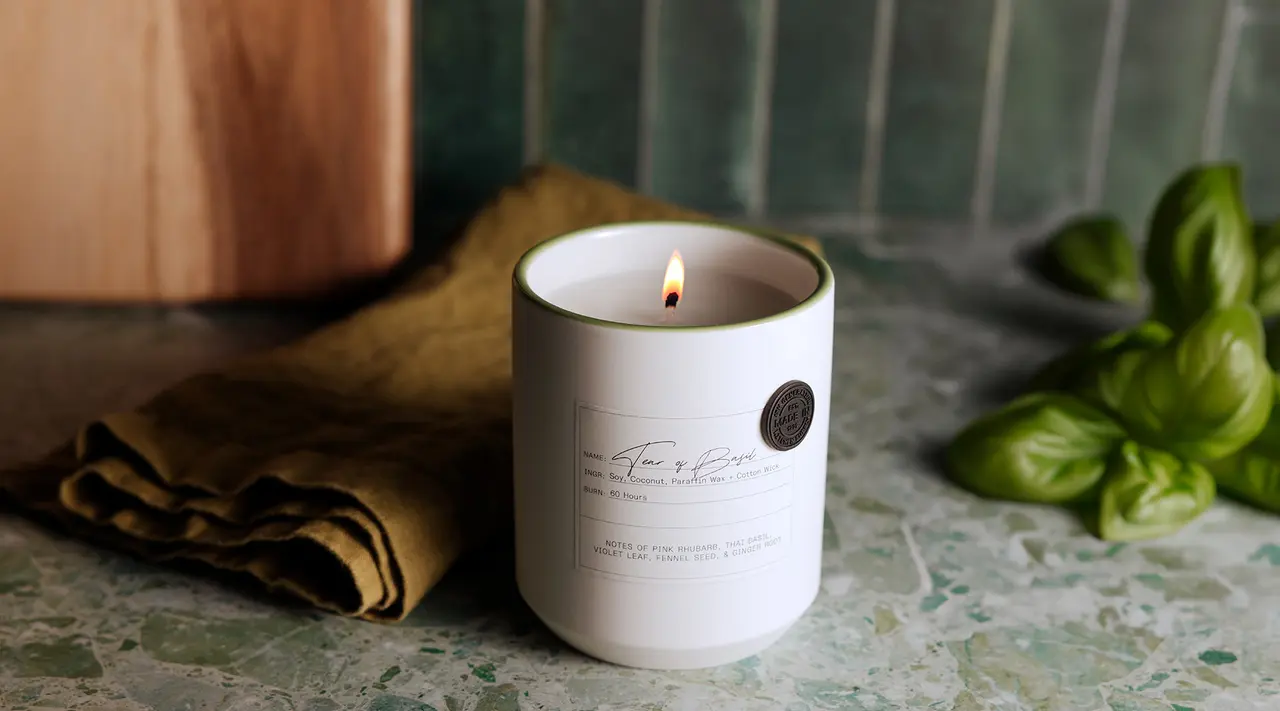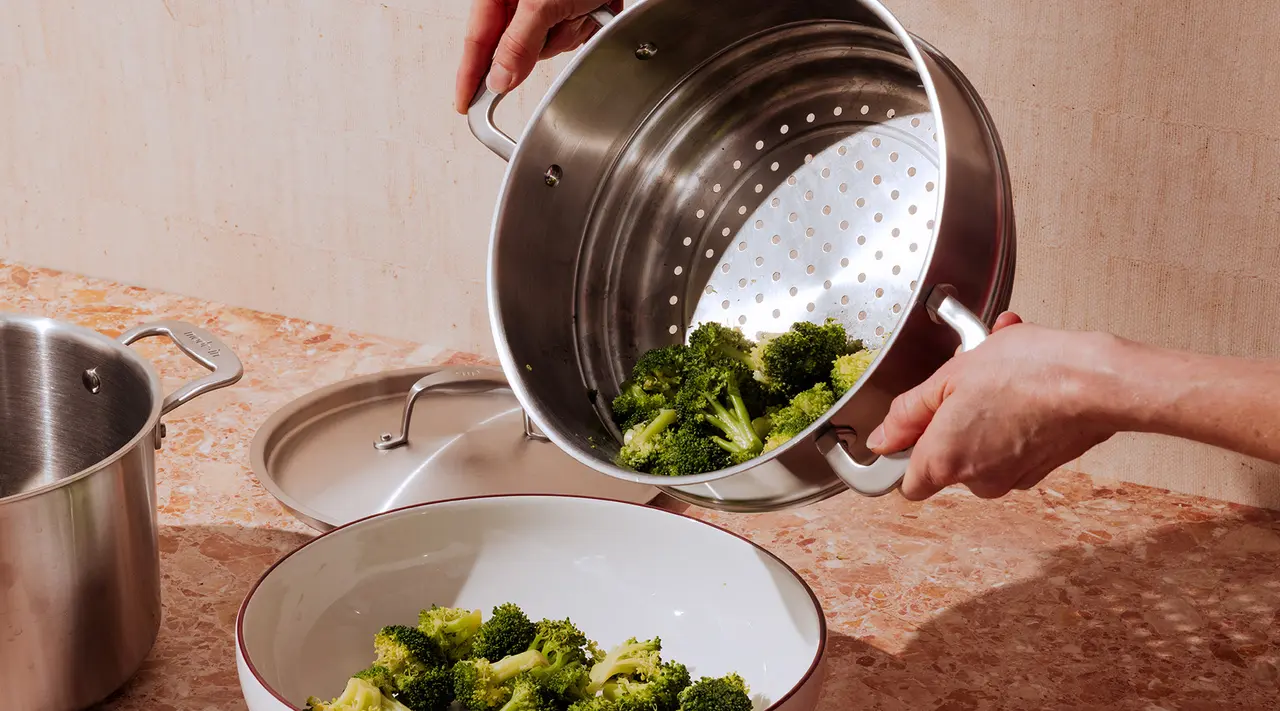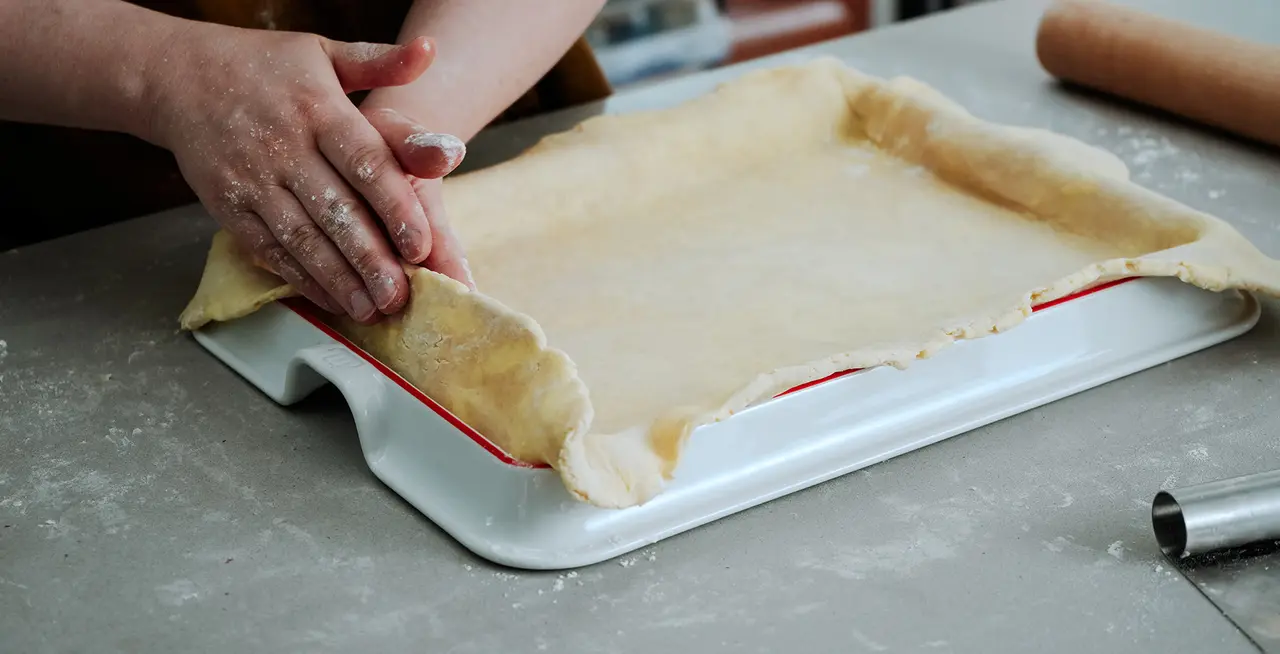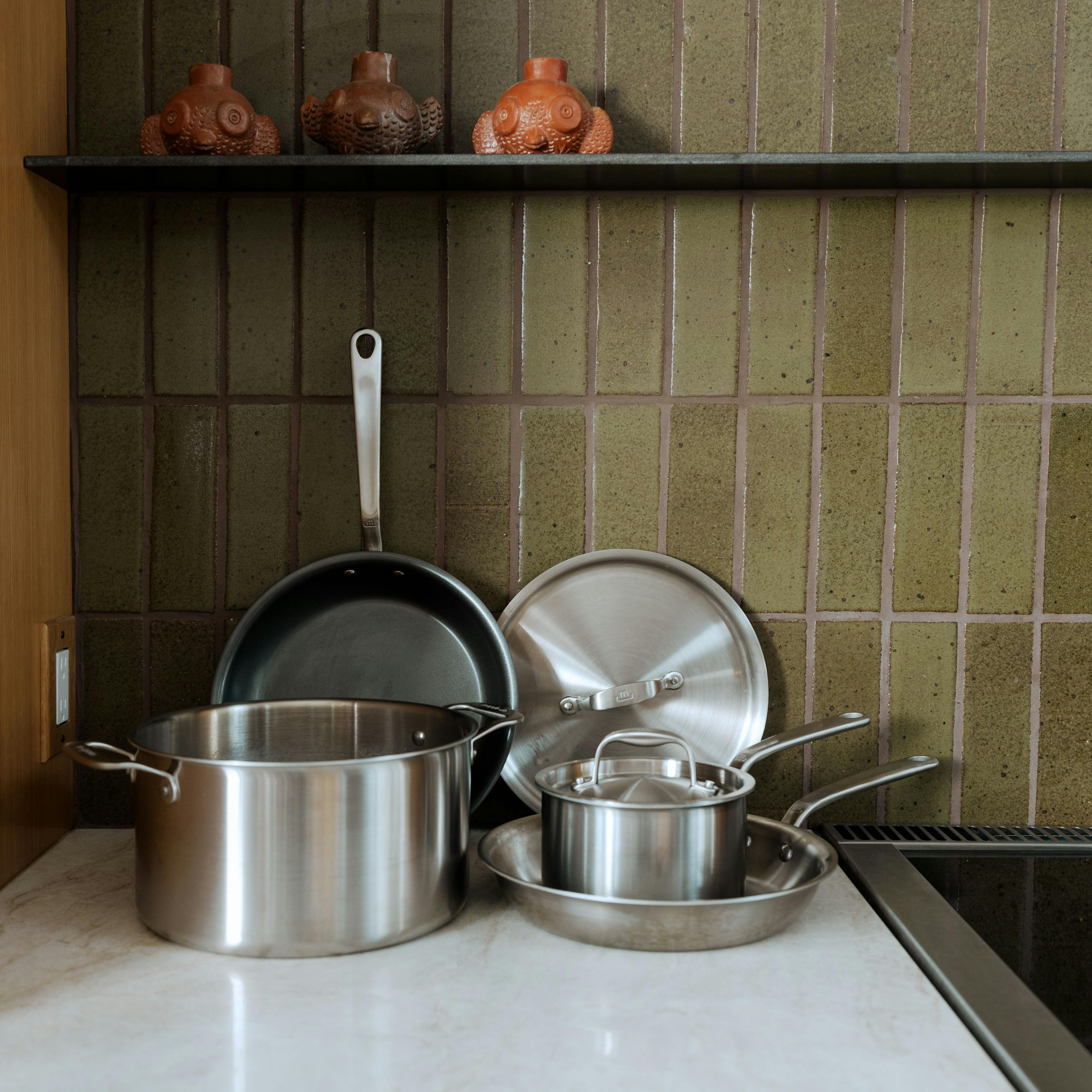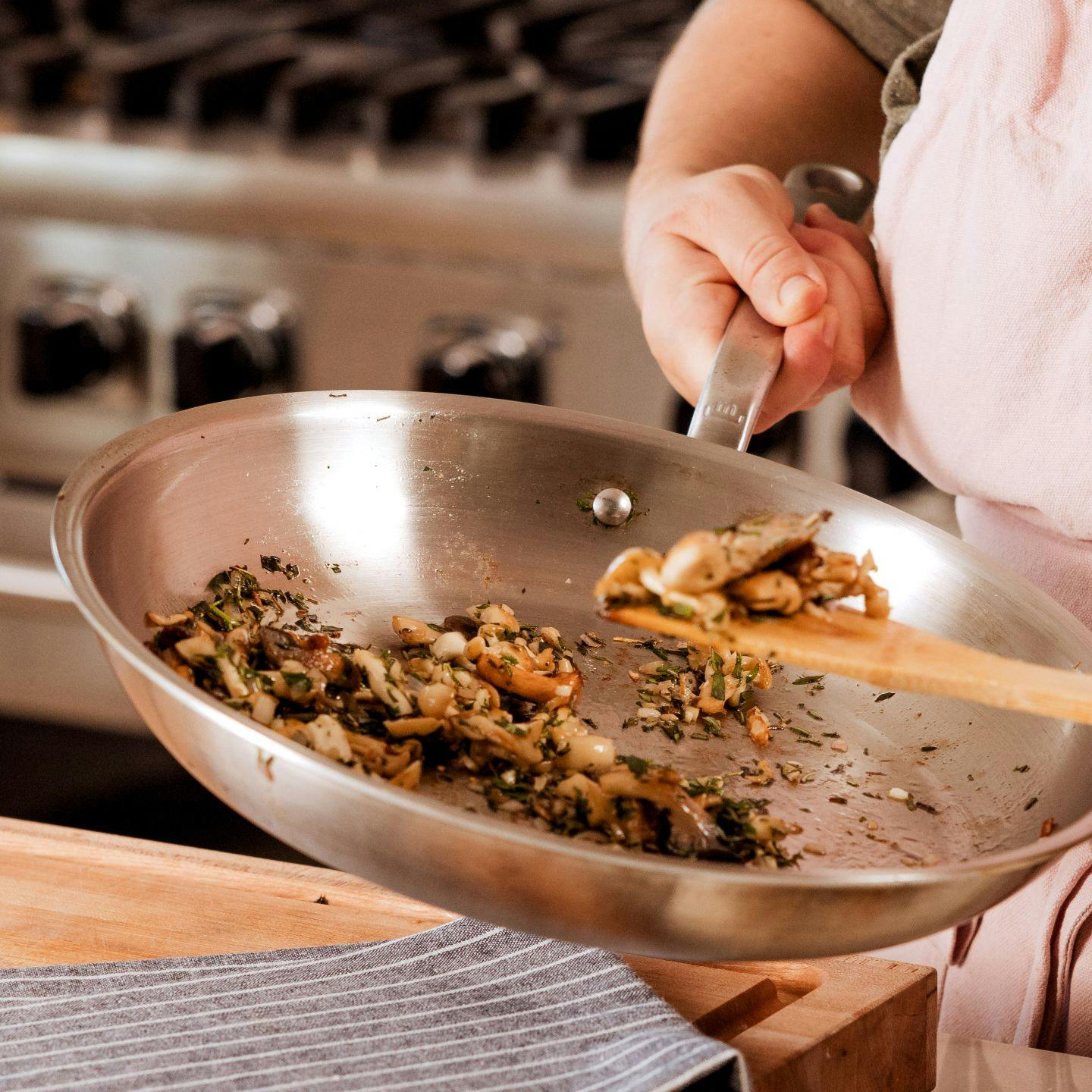The first risotto I ever had was out of a box. It was gummy, overly salty yet devoid of real flavor, and over all, pretty lackluster. I didn’t understand the true magic of risotto until many years later when I let my curiosity get the better of me and ordered it at a restaurant. I’m so glad that I did.
Perfectly cooked and flavorful rice is hard to beat. It seems like a very difficult dish to replicate at home but I was wrong again. You start with a base of onions or better yet, shallots, sweat those down, add rice, wine and then achieve that beautiful creaminess by slowly adding stock before finishing it off with butter and cheese. Best of all, once you have the basic technique down, you can riff on this classic recipe again and again. To help us master risotto, we spoke with Chef Ian Thurwachter of Intero in Austin.
The Tools You’ll Need
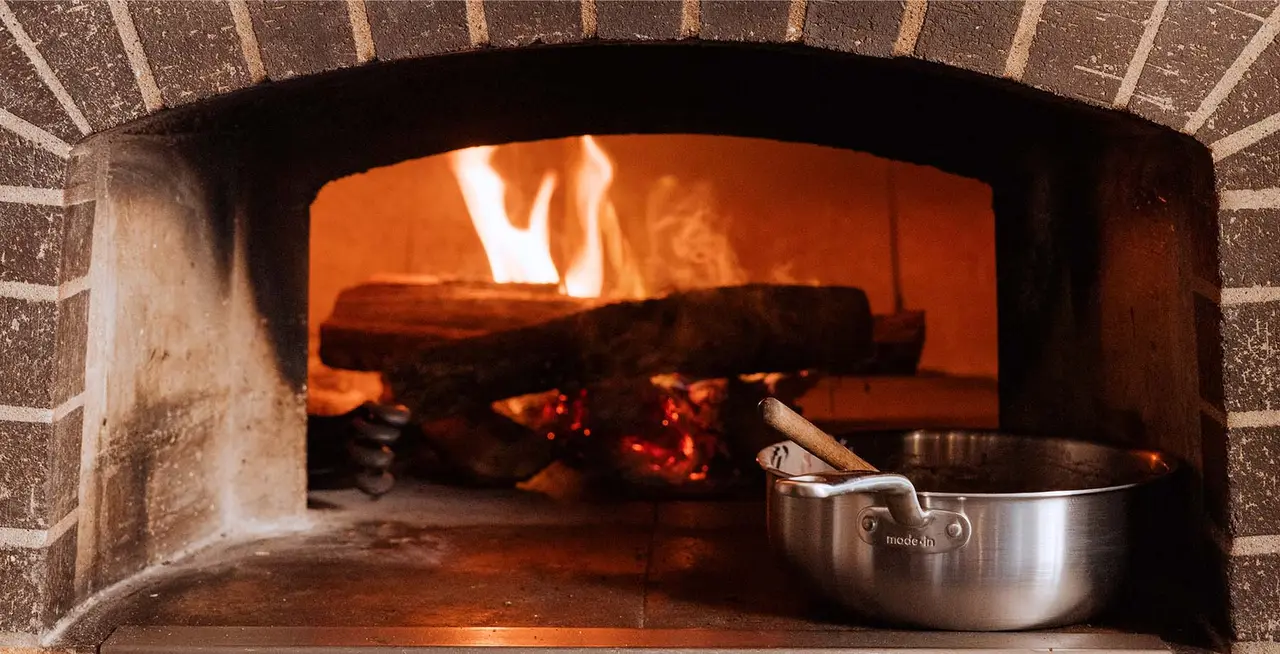
Chances are you probably already have most of the tools you need to make risotto, except for one. Finding the right vessel for your risotto is very important. It not only needs to be deep enough to hold the liquid but also wide enough for effective stirring. A saucepan would be fine but we like our Saucier—the French inspired piece is a cross between a saucepan and sauté pan.
The shallow, rounded shape helps you avoid getting rice stuck in the corners, while the wide mouth makes whisking and stirring feel natural. Additionally, the 5-ply construction allows heat to travel up from the base to the pan’s walls, resulting in even cooking with no hot spots. You will also use a Saucepan to keep the stock warm, a spatula or Wooden Spoon for stirring, and a ladle for adding the stock to the rice, but again, the Saucier is crucial.
The Basic Technique
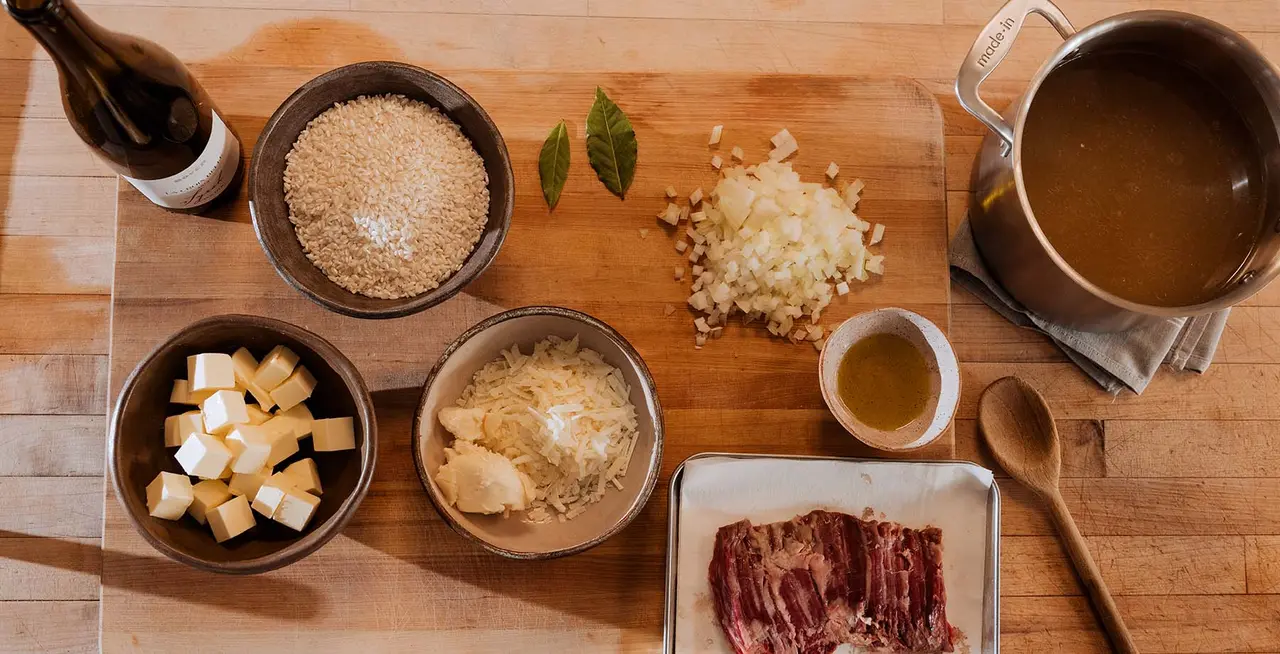
Traditional risotto is made up of only six ingredients, the first of which is the most important—arborio rice.
“If you have the wrong rice, you’re going to end up with something that’s not risotto in any way shape or form,” says Chef Thurwachter. In addition to this, you will need an onion, or ideally a shallot, wine, stock, butter, and a hard cheese as well as salt and pepper to taste and olive oil to finish. Here Chef Thurwachter also used a steak for added protein.
Step One: Sweat Your Aromatics
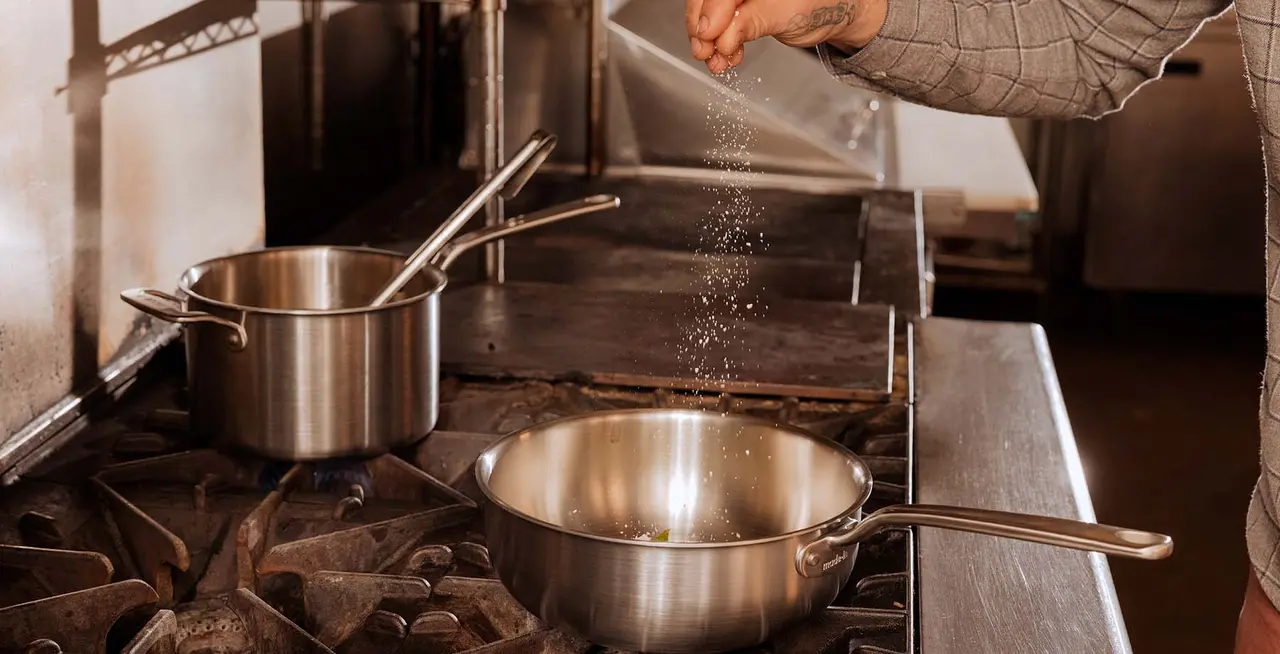
Start by sweating the onion or shallot in some olive oil in the Saucier until it is very soft but not picking up any color. While this is going on, bring your stock to a gentle simmer in the Saucepan. Keep warm over a very low heat. Chef Thurwachter uses chicken, but you could do vegetable or if you wanted an extra flavor boost, try some reserved braising liquid or cuisson.
Step Two: Add Your Rice

Next, add the rice to the onion or shallot. “This is the most important step because it is going to affect both the texture and the creaminess of the risotto,” says Chef Thurwachter. “The toasted kernels [should be] almost translucent.” Follow the rice with white wine, which not only adds flavor but helps balance the overall richness of the risotto. Allow this to simmer until all the wine is absorbed.
At this point, you should have about three times as much liquid in your Saucepan as you do rice in the Saucier. Chef Thurwachter says that it's crucial to salt the rice and wine mixture before adding in the warm stock. “I want to season the rice itself,” he says. “If I add all my salt at the end, then the cooking liquid is going to taste really nicely seasoned, but the rice itself won’t absorb it.”
Step Three: Slowly Add Stock
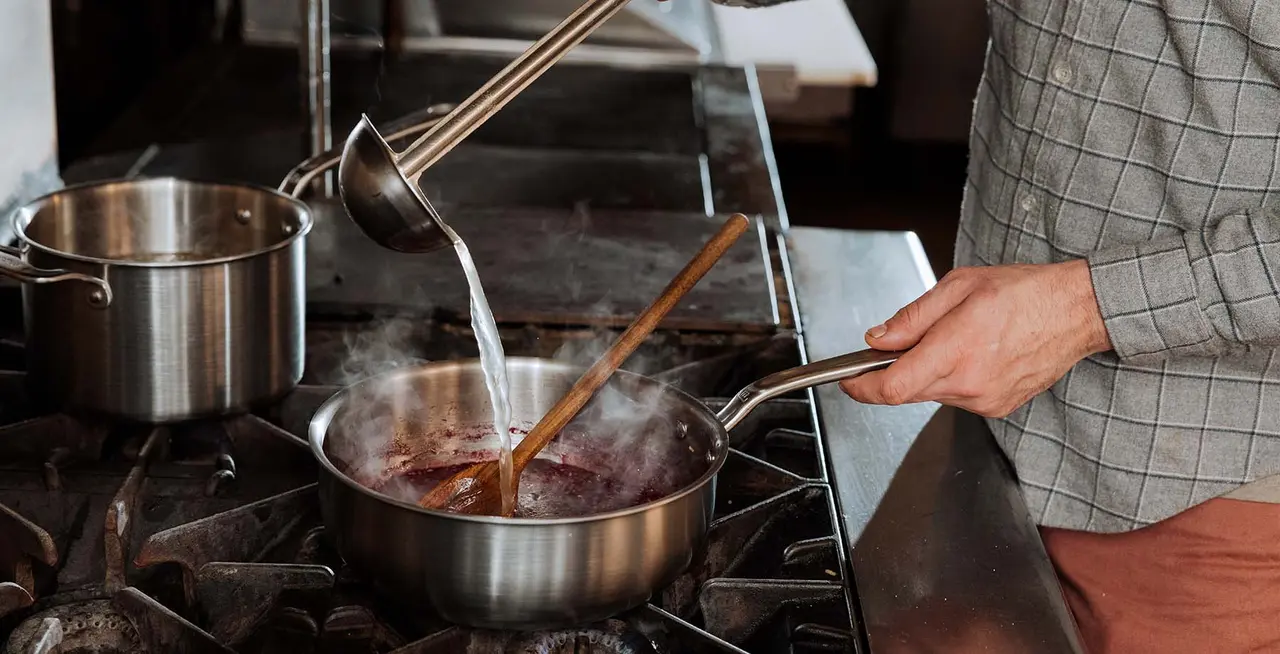
Now it’s time to add in the stock, but slowly, in small increments. As for when to add more, Chef Thurwachter says that: “if you have your stock at a boil, your rice kernels are basically stirring themselves,” adding that “once I hear the bubbling start to subside, then I’ll add my next addition of stock.”
You will want to stir the rice every so often to make sure the starches are breaking down and being released and to make sure nothing is getting stuck on the bottom of the pan (if you’re using a Saucier, this will be much easier). Once the stock is absorbed, it’s time to add another ladle. You don’t want to overcook or else you’ll end up with mushy risotto!
Step Four: Finish with Fat
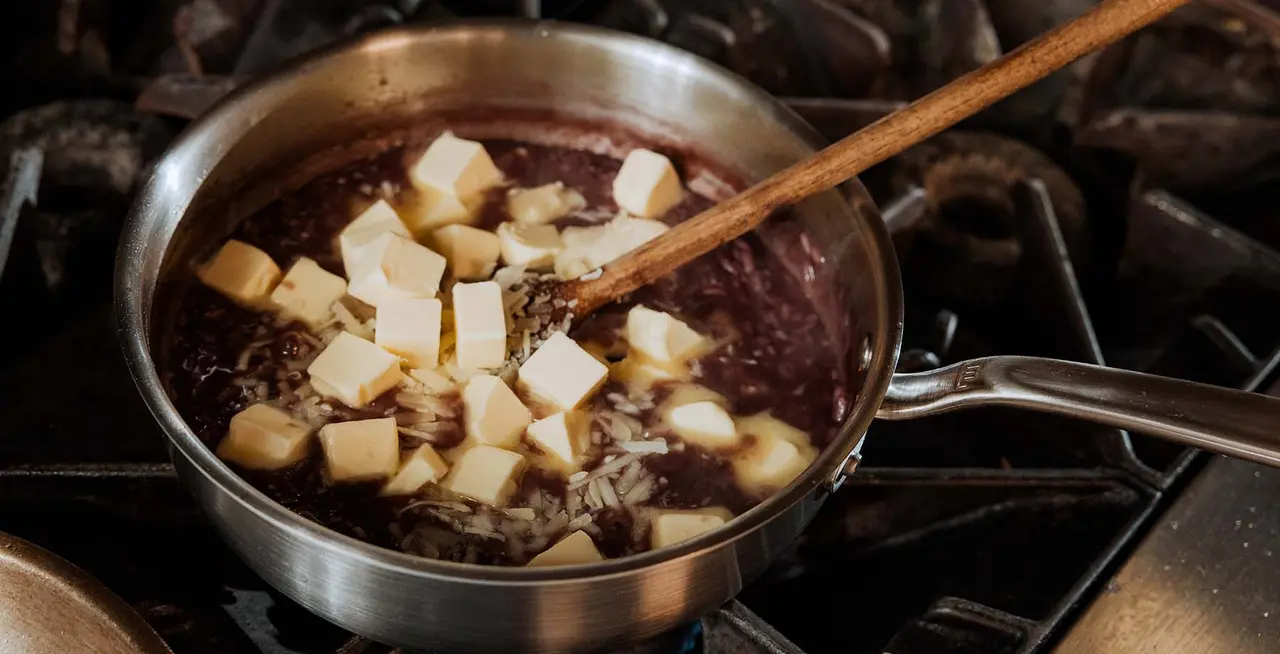
When the rice has reached that perfect al dente stage, the kernels should be plump and slightly translucent. “Wait until the end to add your butter or your end result will be sort of greasy,” Chef Thurwachter says. “Risotto is meant to be decadent, so add lots of butter and lots of cheese.”
After a quick simmer to incorporate those last additions, remove your Saucier from the heat and serve immediately. To elevate the dish, serve it on a warm oven-safe plate or bowl, heated in the oven at 350F for about ten minutes.
